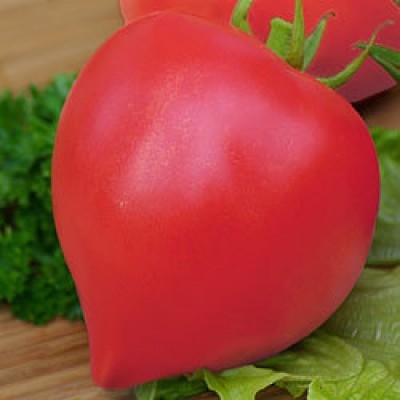
- Authors: Ognev V.V., Maksimov S.V., Klimenko N.N., Kostenko A.N., Sergeev V.V., Agrofirma POISK LLC
- Year of approval: 2010
- Category: hybrid
- Growth type: indeterminate
- Appointment: fresh consumption
- Ripening period: early
- Ripening time, days: 95-100
- Growing conditions: for film greenhouses
- Transportability: Yes
- Bush size: tall
Most summer residents try to grow tomatoes, which ripen early and give a rich harvest. One of the most popular and beloved by gardeners and farmers is the early-ripening variety Voyage, which grows well both in open ground and in greenhouses.
Breeding history
The Voyage nightshade crop was bred by a group of breeders (Klimenko, Sergeev, Kostenko, Ognev, Maksimov) representing the Russian agricultural company Poisk. The early variety was entered in the state register and approved for use in 2010. Recommended growing regions are Central, Far Eastern, West Siberian, East Siberian and northern.
Description of the variety
Tomato Voyage is a tall shrub with an indeterminate type of growth, reaching a height of more than 2 meters. The plant is characterized by moderate thickening of green leaves, strong stems, a powerful root system and intermediate-type inflorescences that form every 3 leaves. The bushes are quite compact as they grow tall. Experts recommend regular pinching, mandatory tying to supports and the formation of bushes in 2 stems.
The main qualities of the fruit
The tomato grows to an average size of 120-130 grams. The fruit has a rounded shape with a pronounced "nose" and a uniform pink color. When unripe, the tomato is light green without a dark spot at the base. The tomato skin is thin, but strong, so the fruits can be easily transported. Tomatoes have a low shelf life - up to 2-3 weeks, subject to storage conditions. In addition, tomatoes are resistant to cracking.
Taste characteristics
The taste of Voyage tomatoes is excellent. They are sweet and juicy. The pulp of the fruit is fleshy and fragrant, therefore, the fresh tomato is revealed as much as possible - salads, dressings. The variety is also suitable for canning and processing into dressings and juices.
Ripening and fruiting
Voyage early. From the moment the first shoots appear until the full maturity of the fruits, it takes 95-100 days. Fruit ripening occurs gradually, and the fruiting period is slightly extended - from mid-July to late August, which allows you to enjoy tasty and fresh tomatoes for a long time. Ripening and fruiting times may shift slightly due to climatic conditions.
Yield
The yield indicators for the early maturing variety are quite high. Subject to all the rules of agricultural technology, you can collect up to 14-18 kg of tomatoes from 1 m2. In domestic greenhouses, the yield can be even higher.
The timing of planting seedlings and planting in the ground
Sowing seeds for seedlings is recommended to be done in the first half of March, approximately 60-65 days before planting in a permanent place. Before sowing, the seeds are sorted and disinfected. The creation of a greenhouse effect using polyethylene will help speed up the germination process. Seed germination occurs on the 5-10th day. The room should be warm and light.With the appearance of 2-3 true leaves, a dive is carried out (seating in separate pots). It is recommended to plant bushes in the ground when they have 7-9 leaves, and the stem has compacted to 1 cm.
The planting of bushes in the ground is performed in mid-May, when it is steadily warm outside and night frosts are behind.

Growing tomato seedlings is an extremely important process, because it largely depends on whether the gardener will be able to harvest at all. All aspects must be taken into account, from seedbed preparation to planting in the ground.
Landing scheme
2-3 bushes can be placed on 1 m2. The planting scheme for bushes is recommended as follows: 70x60 cm.

Growing and care
Light loamy soil, well moistened and fertilized, is considered ideal for growing tomatoes. It is recommended to plant bushes in a greenhouse, however, in the southern regions, gardeners are planting in open ground.
Comprehensive care of the nightshade crop consists of irrigation (drip irrigation is considered the best system), fertilizing with mineral fertilizers, regular pinching and mandatory tying to supports. In addition, do not forget about the prevention of viruses and diseases.




A plant needs different micronutrients at each stage of growth. All fertilizers can be divided into two groups: mineral and organic. Folk remedies are often used: iodine, yeast, bird droppings, eggshells.
It is important to observe the rate and period of feeding. This also applies to folk remedies and organic fertilizers.
Disease and pest resistance
The plant has a high immunity. Tomatoes have resistance to late blight, alternaria, fusarium wilt and tobacco mosaic virus.


Resistant to adverse weather conditions
The variety has excellent frost resistance. In addition, tomatoes perfectly tolerate temperature changes, as well as a lack of light.
Growing regions
The culture grows in different regions of Russia, Ukraine and Belarus. In the northern part, the variety is grown in greenhouses, and in the southern part, open ground is allowed.
Review overview
Voyage tomatoes are grown en masse by gardeners on plots and farmers on an industrial scale. Most characterize the variety as productive, completely unpretentious and quickly adapting to the soil. Many people note the high taste of tomatoes, good transportation, as well as the versatility of the variety.
Among the shortcomings, one can single out the need to carry out regular pinching, as well as a short storage time at the right temperatures.

























































































